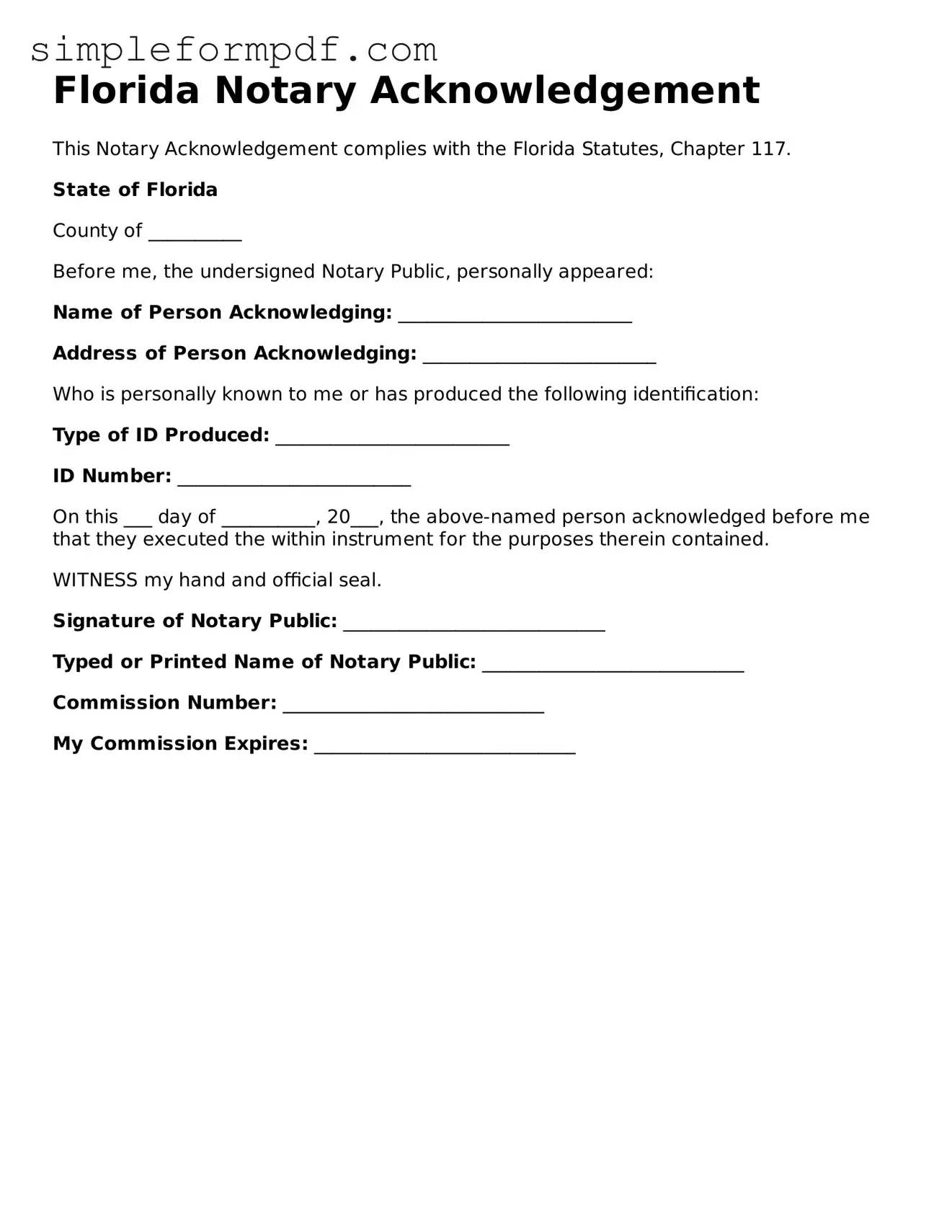Florida Notary Acknowledgement
This Notary Acknowledgement complies with the Florida Statutes, Chapter 117.
State of Florida
County of __________
Before me, the undersigned Notary Public, personally appeared:
Name of Person Acknowledging: _________________________
Address of Person Acknowledging: _________________________
Who is personally known to me or has produced the following identification:
Type of ID Produced: _________________________
ID Number: _________________________
On this ___ day of __________, 20___, the above-named person acknowledged before me that they executed the within instrument for the purposes therein contained.
WITNESS my hand and official seal.
Signature of Notary Public: ____________________________
Typed or Printed Name of Notary Public: ____________________________
Commission Number: ____________________________
My Commission Expires: ____________________________
